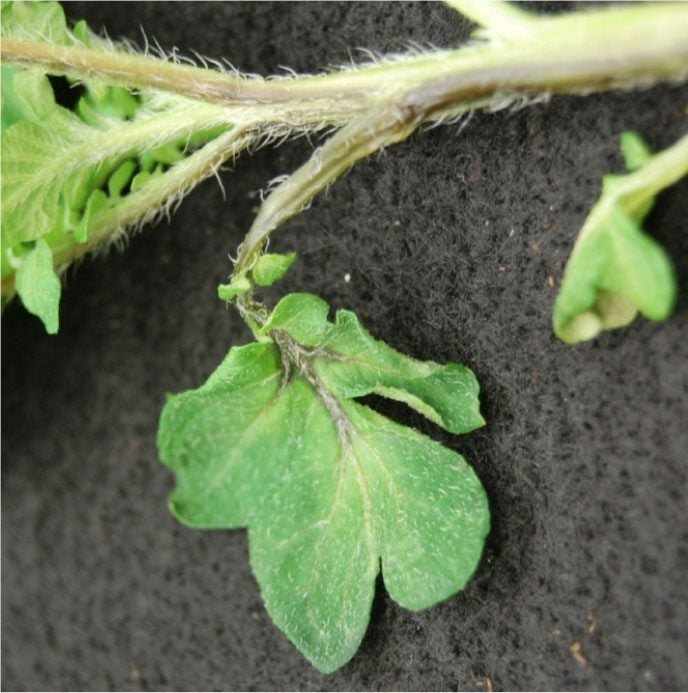What Is Potato Dickeya – Recognizing Blackleg Potato Symptoms


Potatoes in your garden can fall victim to a bacterial infection called blackleg. The term blackleg is often used to describe both the true disease, which arises from infected seed potatoes, and a condition called stem rot. With the right potato blackleg information, you can prevent or control this disease for which there is no chemical treatment.
What is Potato Dickeya – Blackleg Potato Symptoms
Two groups of bacteria cause this infection: Dickeya, which is one alternate name for the disease, and Pectobacterium. Previously these groups were both classified under the name Erwinia. Blackleg caused by Dickeya is more likely in high-temperature conditions, and is, therefore, more common in warmer climates. The symptoms of this bacterial infection begin with lesions that appear water soaked. These turn up on the base of the plant’s stem. As the infection progresses, the lesions will come together, get larger, turn darker in color, and move up the stem. When conditions are wet, these spots will be slimy. When conditions are drier, the lesions are dry and the stems desiccated. As the lesions develop on the stem, secondary infections may begin higher up. These then progress downward, meeting the original lesions. Other symptoms may include yellowing, brown, or wilted leaves attached to the affected stems. Eventually, the entire plant may collapse and you may see rotting in the tubers.
Controlling Dickeya Blackleg of Potatoes
Potatoes with blackleg, once infected, cannot be treated with any chemical spray. This means that prevention and management through cultural practices are the best and really only ways to avoid losing a crop to the infection. One of the most important things you can do is buy and use seed potatoes that are certified to be disease-free. Even with clean seed potatoes, infection can get in, so use those that don’t have to be cut or clean equipment well if you do have to cut seed potatoes. If the infection is in your garden already, you can manage it with several cultural practices:
- crop rotation
- using well-drained soil
- avoid over-watering and over-fertilizing
- removing and destroying infected plants
- regularly cleaning up plant debris from the garden
Harvest your potatoes only when they are fully mature, as this ensures the skin is set and the tubers won’t bruise easily. A few weeks after the plant is dried and desiccated should ensure the potatoes are ready for harvest. Once harvested, make sure the potatoes stay dry and remain unbruised.
Gardening tips, videos, info and more delivered right to your inbox!
Sign up for the Gardening Know How newsletter today and receive a free copy of our e-book "How to Grow Delicious Tomatoes".

Mary Ellen Ellis has been gardening for over 20 years. With degrees in Chemistry and Biology, Mary Ellen's specialties are flowers, native plants, and herbs.
-
 Terrifically Tubular Flowers For Hummingbirds: 9 Tube-Flowered Plants To Attract Hummers
Terrifically Tubular Flowers For Hummingbirds: 9 Tube-Flowered Plants To Attract HummersGrowing tubular flowers for hummingbirds helps you create the optimum feeding conditions for your winged friends. Here are nine tubed delights for hummers
By Tonya Barnett
-
 How To Grow Hydroponic Tomatoes For Fresh Indoor Harvests – No Soil Required
How To Grow Hydroponic Tomatoes For Fresh Indoor Harvests – No Soil RequiredLearning how to grow tomatoes in water is easy and allows you to harvest fresh-home-grown produce in every season without any mess.
By Ellen Wells